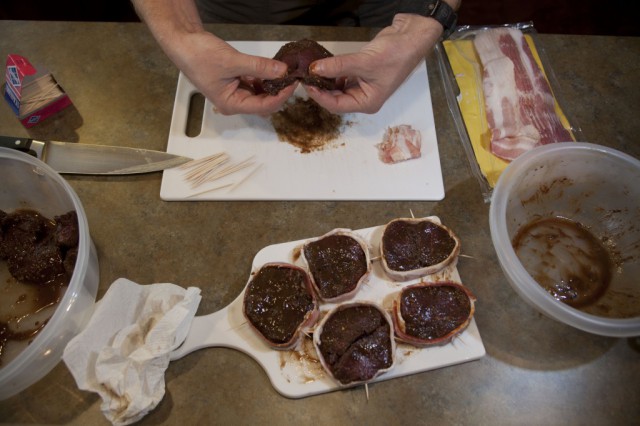Many people will take their entire deer, hide and all, to a commercial processor, turning their $28 deer tag into more than $100 of meat their family may not eat. Not to say that most processors aren’t good at what they do, but they are also working with what you give them. Which is, quite often, an ill-prepared collection of meat that can’t help but taste “wild” or “gamey.” Before you make this mistake again, try these steps to make the venison you put on the table more palate pleasurable.

Field Dressing
Field dress your deer quickly after the kill, doing your best not to cut anything that doesn’t need cutting. Make sure you drain as much blood from the deer’s cavity as possible, because blood is what causes the “gamey” taste often associated with deer.
Skinning
I’ve been told there are guys up in these northern parts that let their deer hang for days if the temperature is right. NEBRASKAland might do a story on this technique in the near future, but it won’t be written by me, because first I’d have to try it myself. Growing up down south, we usually didn’t encounter weather cool enough, or for long enough, to allow us to hang deer for days without spoilage. Most of the time, the day my deer dies I skin it out, wash it off with a water hose, trim any easily reachable loose fat or undesirable meat, and take the four quarters, backstraps, tenderloins and as much neck meat as I can wrangle and put it in a cooler.
In the Cooler
When the meat’s in the cooler, start filling it with water while removing any additional fat you didn’t see before. Rinse and drain the meat several times – each time you do this, the water should be less bloody than before. Finish trimming off as much fat and connective tissue as you can, because this is where grass, dirt and blood will collect, adding to the meat’s wild taste. Finally, sprinkle at least ¼ cup of salt over the pieces of meat, rubbing it into the meat as much as possible, and cover with ice. The next morning, drain all the fluid out of the cooler again and add additional ice as needed. By the end of that day, drain one last time, pouring out the large amount of blood you didn’t know the meat could still have and eliminating even more of the “gamey” taste.
Go Commercial or Finish at Home?
Next you have to decide whether you’re going to finish taking care of the meat yourself or take it to a commercial processor. I’m not opposed to taking meat to a processor because I have found some that make excellent burgers, sausage and steaks, but you should call beforehand and ask if the processor will take a quartered deer instead of a whole one. The reason why I go to this much trouble for meat that I might have a processor finish is because after quartering a deer, I know how well it was cleaned. When someone else does it, I’m not so sure. Because I’ve had people suggest that a person never knows whose meat they’re getting back from a processor, I ask that question before I ever deal with a processor that I’m not familiar with. If my meat doesn’t come back tasting excellent, I find a different processor.
The Cutting Board
If you are sending your quartered, rinsed meat to the processor, put it in a clean cooler and cover with ice. If not, decide how you might want to cook it, then cut accordingly. Some options include:
• Shoulders: Leave them whole and slow cook in the oven before smoking on the grill. Your friends will ask how you made it taste so good.
• Hindquarters: Cut for roast or steak, cube for shish kebabs, slice for jerky, grind for burger or slow cook like shoulders.
• Backstraps/Tenderloins: Cut into steaks or slice into small chunks to be fried with onions.
• Neck: The necks of the small southern deer I grew up with weren’t big enough to mess with, but Nebraska deer necks have a lot more meat on them, which I trim off and roast in the crock pot. It won’t usually be as tender as tenderloins, so longer, slower cooking is definitely in order.
Freezing
Wrap shoulders and hindquarters in a plastic wrap, covering them in several layers to prevent freezer burn. Then wrap with freezer paper, label and place them in the freezer. For the rest of the meat, freeze in water using plastic bags and make sure you fill the water up past the edge of the meat. Also remove all the air from the bags to preserve the meat longer and prevent freezer burn.
Cooking
Cooking is the easy part if you take care of your deer properly before it’s in the pan. Like I was told growing up, shooting a deer is half the work. Field dressing, butchering and freezing is the rest. And this works for any game animal.
Look, my wife wasn’t raised on a farm and didn’t eat wild meat until we were married. Now, she’ll eat dove, duck, deer and fish, and will often tell those who haven’t eaten deer before that it will taste like deer, but it won’t taste “wild.”
This article first appeared in NEBRASKAland Magazine November 2007.
 Nebraskaland Magazine
Nebraskaland Magazine



